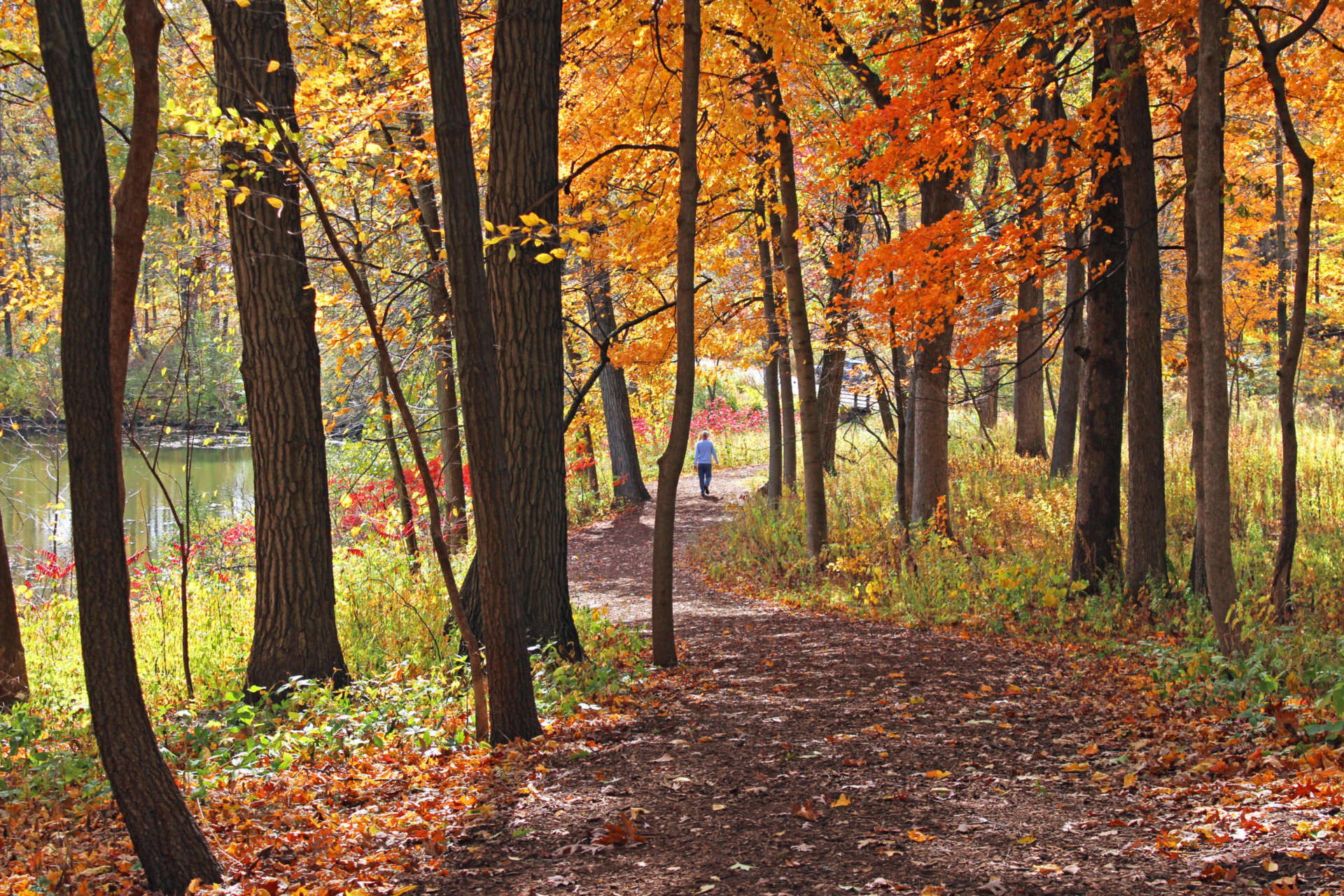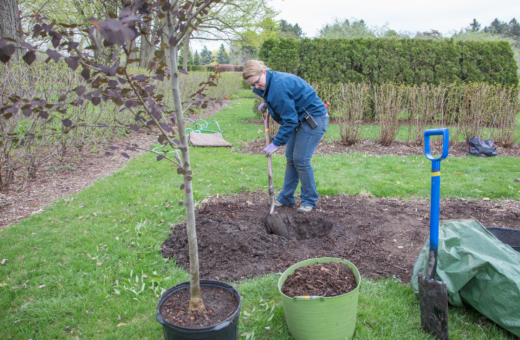Top Spots to See Fall Color at the Arboretum
The No. 1 question Arboretum employees and experts get asked this time of year is when fall color will be at its peak. The answer: It depends.
While mid-to-late October is generally the best time for leaf vibrancy, it can shift a couple of weeks either way, depending on factors such as temperature and precipitation. Cool nights and sunny days help fall color reach its full potential. Some trees and plants, such as staghorn sumac (Rhus typhina), begin to change color at the Arboretum as early as September.
“The dry year we’ve had means that some of our early turning trees, such as the maples in the main parking lot, are already starting to show color,” said Christy Rollinson, PhD, forest ecologist. “Others, like fairly drought-tolerant oaks, are still a long way off.”
While in the throes of planning your seasonal saunter at the Arboretum, consider location rather than timing. “Because of the Arboretum’s incredible tree diversity, there’s always a great spot to find color any time in the fall,” said Rollinson. “It’s more a matter of where to go than when to go.”
Also, consider the trees you see on a daily basis. “The peak, when leaves turn to their most vibrant colors, is more difficult to predict than the onset, so it’s best to keep looking at your neighborhood trees to time your fall color excursions.”
To aid in your autumnal exploration of the Arboretum, we asked our forest ecologist and the experts at the Plant Clinic to narrow down this list of eight top spots to see spectacular fall color (in no particular order):
Maple Collection
Maples (Acer) are famous for their fall color and the Maple Collection at the Arboretum is a fantastic place to see the glowing orange of the sugar maple, the vibrant yellow of the Miyabe maple, and the dramatic red of the Japanese maple. (East Side; Main Trail Loop 3; parking lot P-14)
Oak Collection
The Arboretum’s extensive collection of Oaks (Quercus) turns a rich burgundy in the fall. There are 56 different kinds and more than 200 oak trees from North America, Asia, and Europe. The collection is distributed across 12 acres on the East Side of the Arboretum. (East Side; Main Trail Loop 3; parking lot P-8)
East Woods
In the East Woods, the sugar maple (Acer saccharum) steals the show. Every autumn, the woods on the East Side are set ablaze in orange and yellow. (East Side; Main Route road; parking lots from P-6 through P-13 provide good places to start a walk)
Ginkgo Collection
Ginkgos enjoy the distinction of being the only surviving species of the Ginkgo family. The Ginkgo tree can live for hundreds of years, reach impressive sizes, and has unique fan-shaped leaves that display breathtaking colors. “Ginkgo Drop Day” is when the leaves of a Ginkgo tree suddenly drop all at once, Rollinson said. “It’s fun to watch and photograph the yellow leaves raining down — if you get the time right,” she said. (East Side; Ginkgo Collection, located near the Japan Collection, along the edge of the Main Route road.)
Meadow Lake Trail
This paved half-mile trail adjacent to the Visitor Center loops around tranquil Meadow Lake with visions of red, yellow, and burgundy displayed by maples, river birch, and a variety of oaks. The lake’s native grasses also put on a beautiful fall display. (East Side; parking lots P-1 or P-2)
Sterling Pond
Traverse over rolling terrain along Main Trail Loop 3 as it meanders along the banks of Sterling Pond, where an array of fall colors await. (West Side; parking lots P-24 or P-28)
Schulenberg Prairie
One of the nation’s oldest and most successful prairie and savanna restorations is a thriving habitat and a place of beauty in the fall. Dominated by grasses, it blends into areas of restored savanna — scattered oak trees with prairie between them. (West Side; parking lot P-25)
Frost Hill
Drive the Main Route road to the top of Frost Hill for sweeping views of Meadow Lake and the Midwest Collection in all its seasonal splendor. For great fall color, check out the scarlet and purple foliage of the black tupelo or black gum (Nyssa sylvatica). (East Side; Northern Illinois Trail; parking lot P-3).



